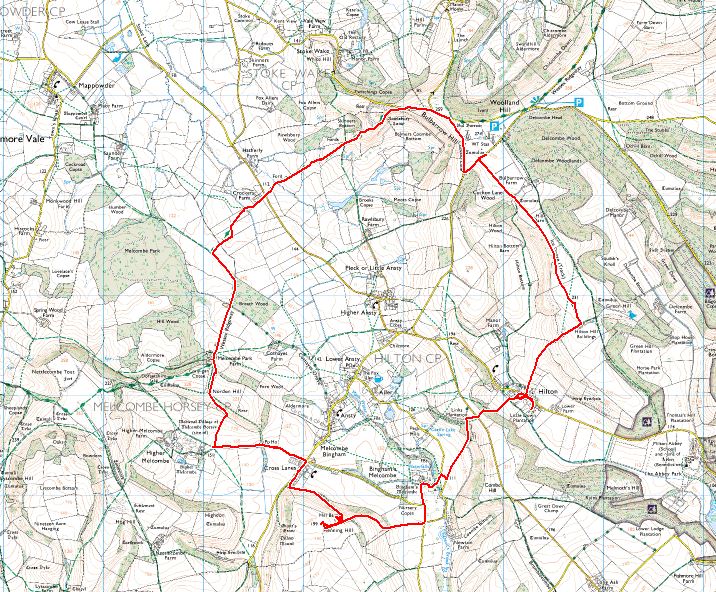My destination was Melcombe Bingham, from whence I would ascend Nordon Hill and Bulbarrow Hill, walk through Hilton and Bingham's Melcombe and back to Melcombe Bingham (I'm not making it up, honestly; there are two places with these inverted names - I guess the people responsible for making up names simply ran out of names!).
Apparently this is the country of Tess of the d'Urbervilles. Hardy's heroine was an intrepid walker; she walked all over this area and worked like a Trojan at a nearby fictitious farm ('Flintcombe Ash').
 |
| Nettlecome Tout |
 |
| Nordon Hill and Melcombe Bingham |
It certainly is a very up and down route! After my first steep ascent (Nordon Hill) I wandered past Melcombe Park and was intrigued by some random inscriptions on planks.
At Crockers Farm I was delighted to see a whole array of snowdrops and a sizeable flock of Chaffinches (checked for Brambling) with a few Yellowhammers.
 |
| Snowdrops at Crockers Farm |
 |
| Flooded ford near Crockers Farm |
 |
| Ascending Bulbarrow Hill |
Ascending Bulbarrow Hill, I was very much in mind, not so much of Tess, but of the poet Hardy, who penned one of my favourite poems 'Wessex Heights'. I love the escapism conveyed in this poem and the feeling of paranoia which he depicts so well. I can definitely identify with his desire to be able to shake off the sensation that everyone is watching you and that by climbing even such a modest hill as Bulbarrow Hill with which he has no human associations, he can rid himself of that anxiety. Down in the valley he feels everyone is 'dubious' and 'askance' towards the shell of himself, the 'chrysalis' which he has invented to endure the 'phantoms' of the towns and lowlands.
So I am found on Ingpen Beacon, or on Wylls-Neck to the west,
Or else on homely Bulbarrow, or little Pilsdon Crest,
Where men have never cared to haunt, nor women have walked with me,
And ghosts then keep their distance; and I know some liberty.
Or else on homely Bulbarrow, or little Pilsdon Crest,
Where men have never cared to haunt, nor women have walked with me,
And ghosts then keep their distance; and I know some liberty.
Tess too 'looked from that height into the abyss of chaotic shade which was all that revealed itself of the vale on whose further side she was born.'.
The walk here is exhilarating, marred just a little by the huge phone masts atop Bulbarrow Hill. I always like to imagine what a landscape would have looked like thousands of years ago when human interference was so minimal. The ramparts of Rawlsbury Camp are impressive and worth a further investigation, especially on such a glorious day as today.
 |
Mini lakes at Brooks Copse below Bulbarrow Hill |
 |
| Rawlsbury Camp on Bulbarrow Hill |
 |
| Gargoyles, All Saints Church, Hilton |

There was yet another hill into Links Plantation, where I passed what I think is a lime kiln.
 |
| Lime kiln, Links Plantation |
 |
| Tree root detail, Links Plantation |
Bingham's Melcombe is delightful, but mostly private property. The public are granted access to the church, but I wish I'd lingered long enough to see the school with its apparent inscription of 'Feed my Lambs' above the door.
 |
| St Andrew's Church, Bingham's Melcombe |
There was still enough light and energy (just about) to extend the walk just that wee bit further to take in a trigpoint (I'd had to miss the one on Bulbarrow Hill due to it being private property and my having a Jimminy Cricket like conscience).
 |
| Henning Hill trigpoint |
I've since read about some Giant's grave on Henning Hill so I wish to return to find out more about that and its associated story which I will leave till next time.
 |
| Bulbarrow Hill walk - 9.9 miles 8 gridsquares photographed |




